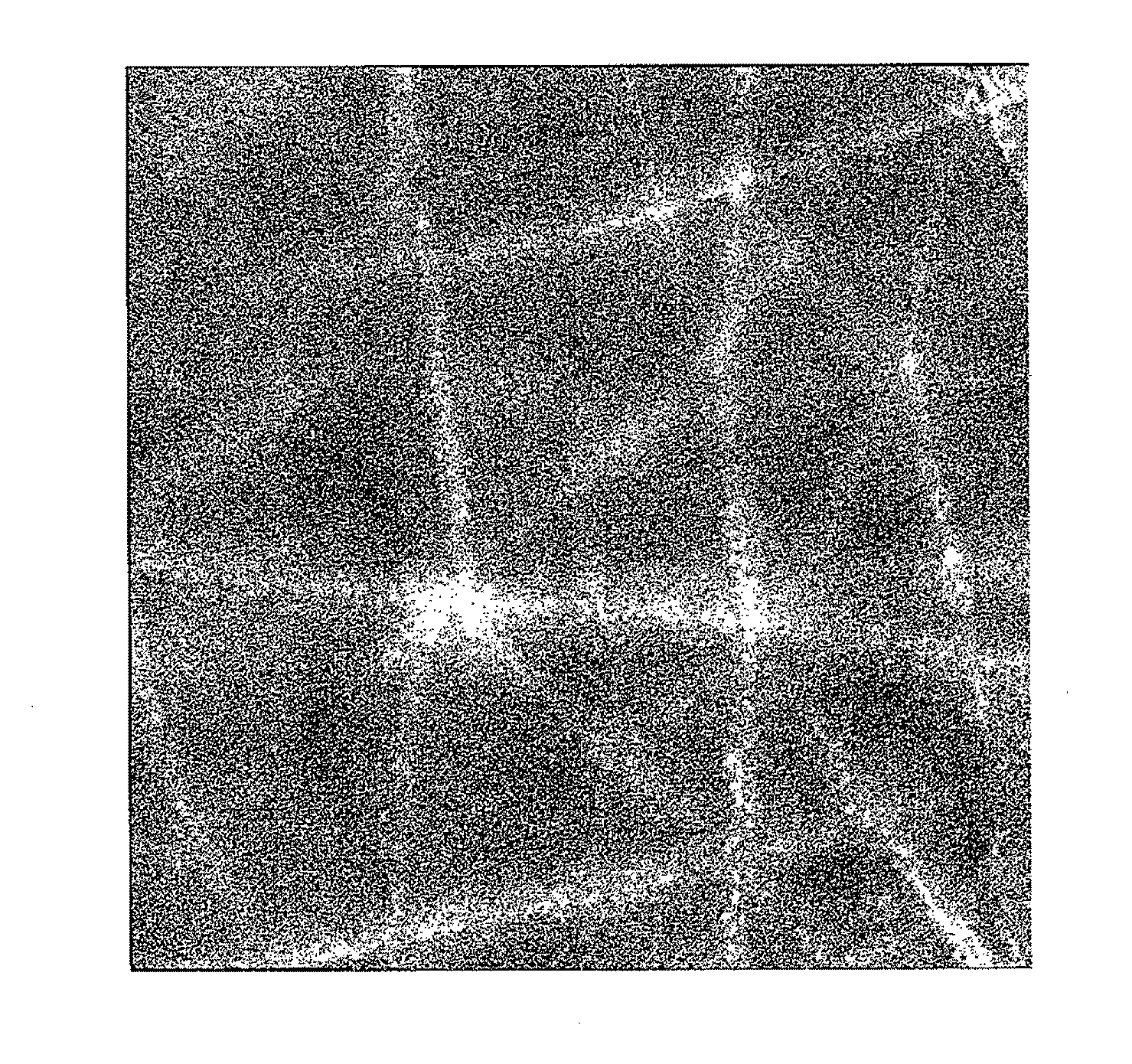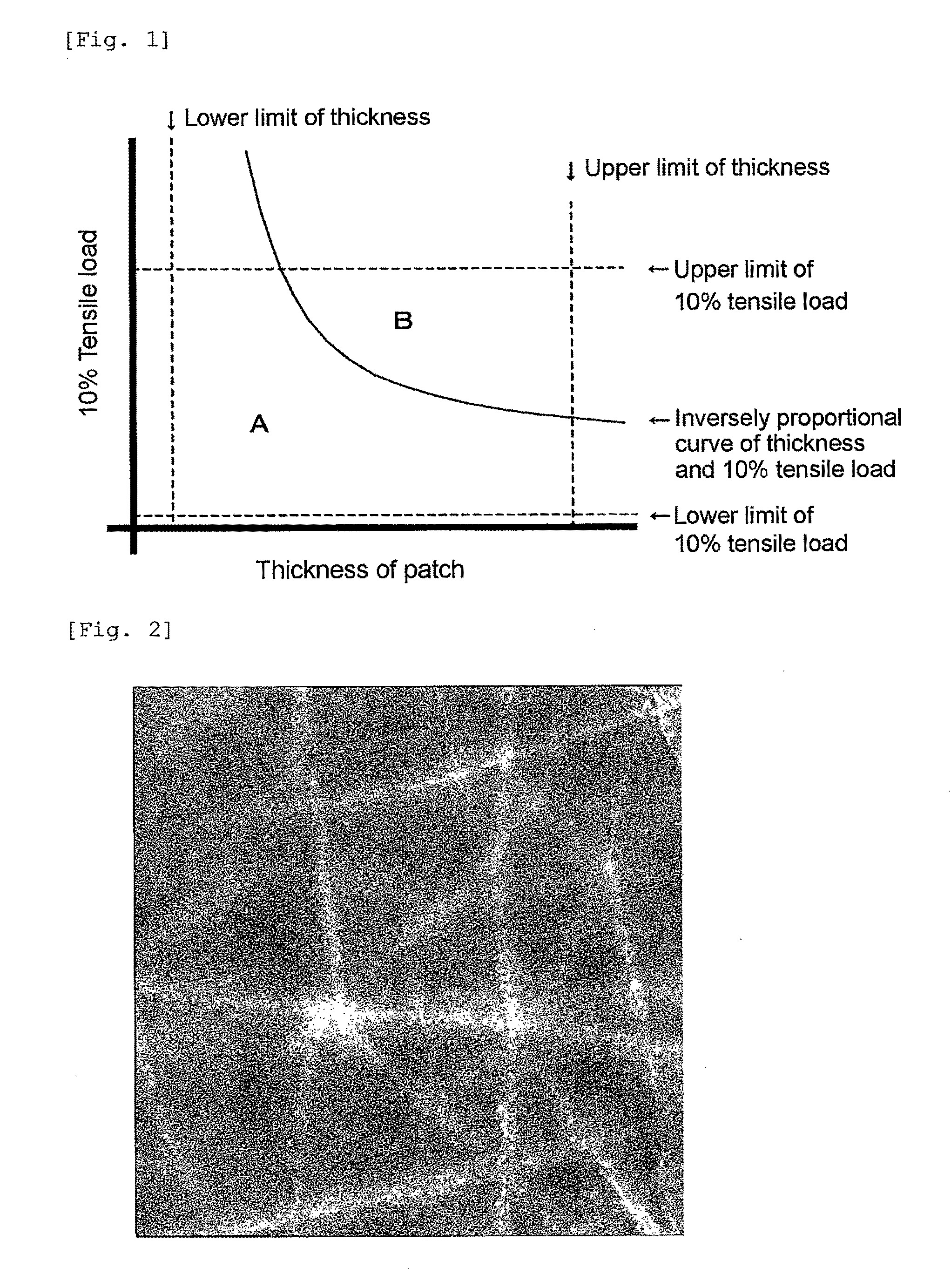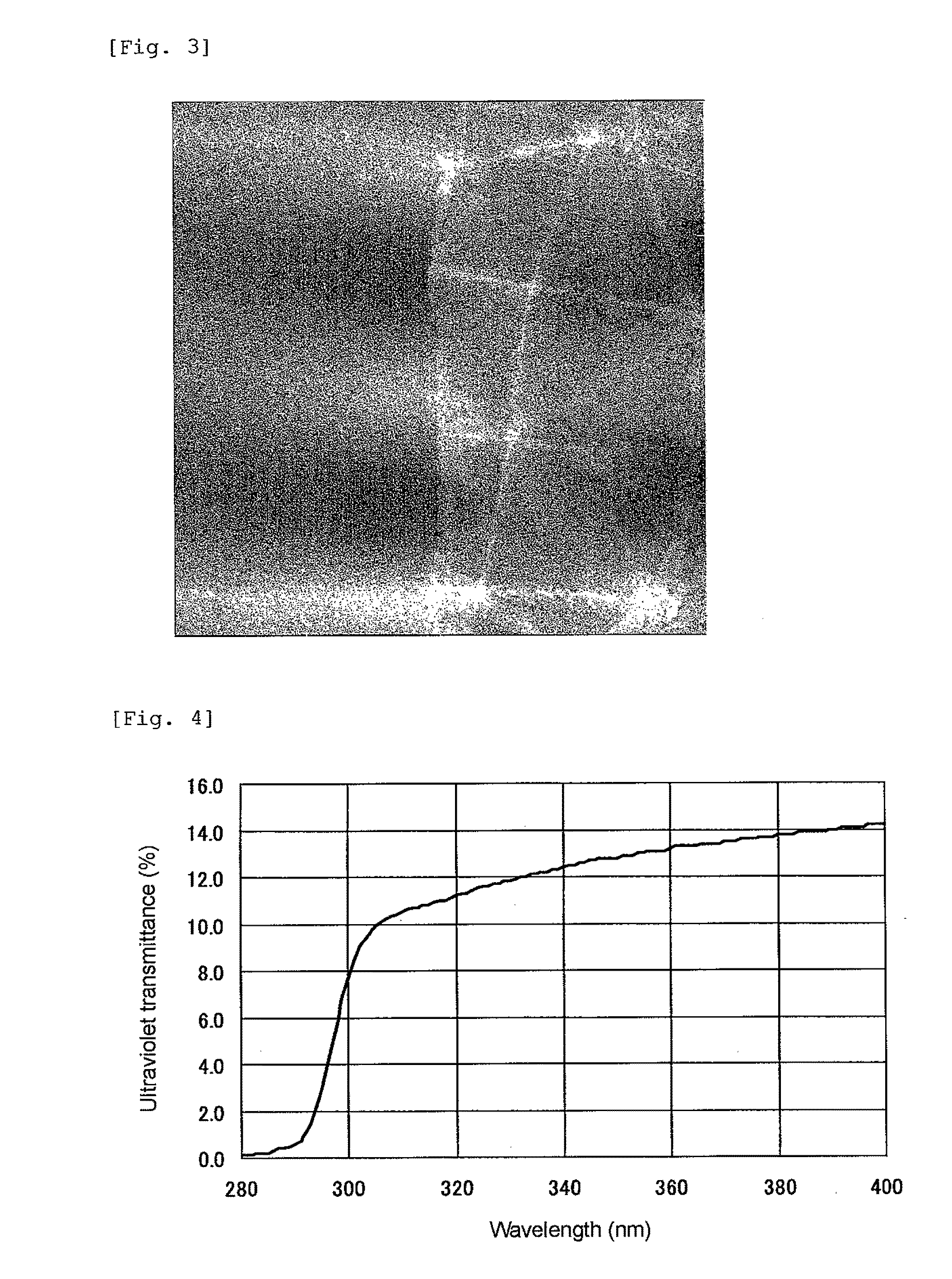Patch Material
a technology of patch material and patch, applied in the field of patch, can solve the problems of inconvenient patching, inconvenient patching, and inability to detect the resistance of the patch, and achieve the effects of easy follow the expansion and contraction movement of the skin, low patch resistance, and high stretchability
- Summary
- Abstract
- Description
- Claims
- Application Information
AI Technical Summary
Benefits of technology
Problems solved by technology
Method used
Image
Examples
example 1
[0151]An organic solvent solution of an acrylic pressure sensitive adhesive (a copolymer of 2-ethylhexyl acrylate / vinyl acetate / acrylic acid=85 / 11 / 4 weight ratio) was applied to one surface of a separator layer (release paper) by a bar coating method so as to give a dry coating thickness of 5 μm and then dried to form a pressure sensitive adhesive layer.
[0152]Woodfree paper, on which a polyethylene had been laminated, was used as a carrier layer, and a solution of an ether type water-vapor-permeable polyurethane elastomer was applied on to the surface on the polyethylene side by a bar coating method so as to give a dry coating thickness of 5 μm and dried to form a base layer. The solution of the ether type polyurethane elastomer is “LUCKSKIN US2268” (trade name; glass transition temperature: −23.1° C.) available from SEIKOH CHEMICALS CO., LTD.
[0153]The base layer obtained above was laminated on the pressure sensitive adhesive layer to produce a patch having a laminated structure of ...
example 2
[0157]Woodfree paper, the polyethylene surface of which had been embossed, was used as a carrier layer, the polyurethane elastomer solution used in Example 1 was applied on to the surface on the polyethylene side by a bar coating method so as to give a dry coating thickness of 5 μm in the same manner as in Example 1 and dried to form a base layer, and the base layer and a pressure sensitive adhesive layer were then laminated to produce a patch.
[0158]In this patch, an embossed pattern was transferred to the surface of the base layer by the embossed pattern subjected to the surface on the polyethylene side of the carrier layer, and this embossed pattern made the patch more inconspicuous when the patch was stuck on the skin. The embossed pattern provided a patch apparently free of a feeling of physical disorder between the skin and the patch. With respect to this patch, the coefficient of dynamic friction was determined on 10 adult men and women by the changed method of JIS P 8147. As ...
examples 3 to 9
, AND COMPARATIVE EXAMPLES 1 to 6
[0159]Patches were produced in the same manner as in Example 2 except that US2268 (Tg=−23.1° C.), U-1223 (Tg=−29.0° C.), U-1285, U-2860, and U-1285 / U-1223 (9:1 mixture) of LUCKSKIN (trademark) series available from SEIKOH CHEMICALS CO., LTD. were respectively used as the polyurethane elastomer solution as shown in Table 1, and the thickness of the base layer and the thickness of the pressure sensitive adhesive layer were changed. The results are shown in Table 1.
[0160]FIG. 2 illustrates an image through a confocal microscope obtained by sticking a patch (in which the thickness of the base layer was 1 μm, and the thickness of the pressure sensitive adhesive layer was 2 μm) prepared in Example 4 on the surface of the human skin, and using a model obtained by transferring the stuck state to an impression material for dental surgery. A left half of FIG. 2 shows a back surface of the patch, and a right half thereof shows the fine structure of the skin sur...
PUM
| Property | Measurement | Unit |
|---|---|---|
| thickness | aaaaa | aaaaa |
| thickness | aaaaa | aaaaa |
| thickness | aaaaa | aaaaa |
Abstract
Description
Claims
Application Information
 Login to View More
Login to View More - R&D
- Intellectual Property
- Life Sciences
- Materials
- Tech Scout
- Unparalleled Data Quality
- Higher Quality Content
- 60% Fewer Hallucinations
Browse by: Latest US Patents, China's latest patents, Technical Efficacy Thesaurus, Application Domain, Technology Topic, Popular Technical Reports.
© 2025 PatSnap. All rights reserved.Legal|Privacy policy|Modern Slavery Act Transparency Statement|Sitemap|About US| Contact US: help@patsnap.com



